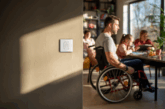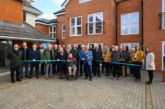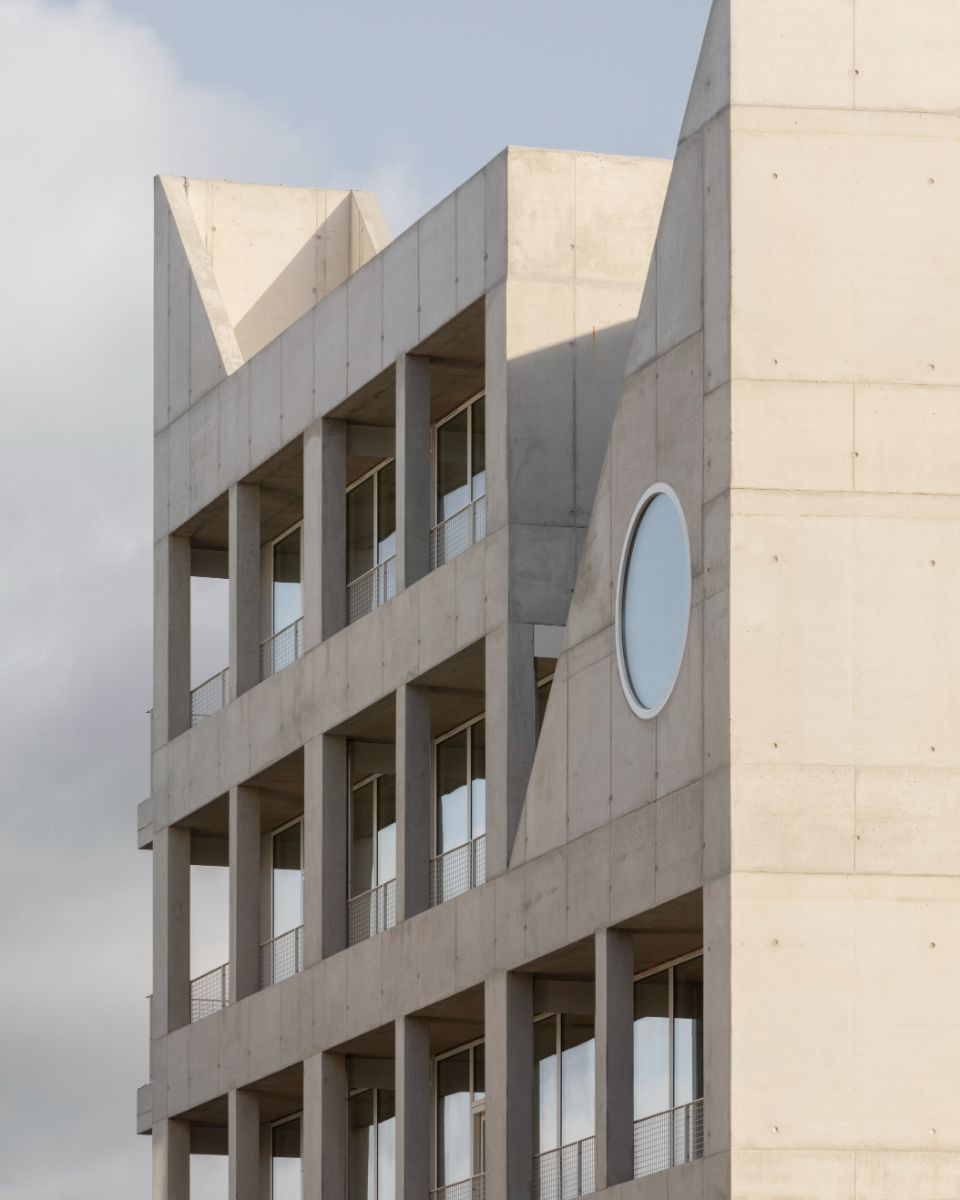
Apparata‘s pioneering housing project provides a blueprint for better buildings and wins RIBA’s Neave Brown Award.
Almost two years ago in London, Apparata’s prescription for the future of social housing was unveiled in Barking. On Wednesday 18th October in Manchester, it was officially recognised on the global architecture stage at RIBA’s annual awards, winning the Neave Brown Award for the UK’s best affordable housing project.
“I am delighted that ‘A House for Artists’ has won the Neave Brown Award. This landmark mayoral project showcases how innovative design can help us tackle London’s challenges, including delivering more genuinely affordable housing, promoting our creative industries and providing the social and community infrastructure that Londoners need — helping to build a better, fairer, more prosperous London for everyone,” says Sadiq Khan, Mayor for London.
Providing flexible living and working space across 12 homes, A House for Artists presents a pioneering blueprint for a new approach to affordable housing — a now-proven template for high-standard, cost-effective, climate-resilient and community-led accommodation. At a time when the UK is potentially on the verge of addressing its long-neglected housing situation, A House for Artists provides an ambitious but achievable model for a new and better way of building social homes.
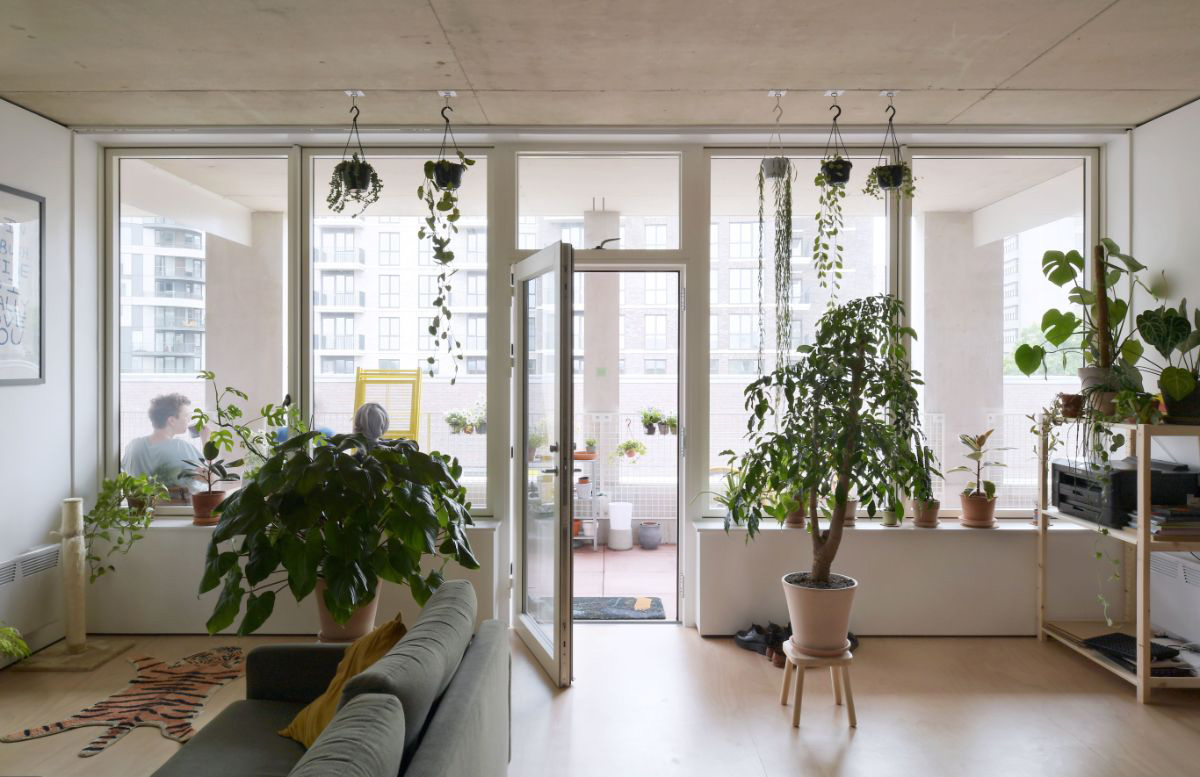
Co-commissioned by the London Borough of Barking and Dagenham and Create London with the Greater London Authority, the robust, practical and playful House For Artists has already been recognised with the RIBA London Award, RIBA London Client of the Year Award and a RIBA National Award. The addition of the Neave Brown Award to its roster of accolades — as well as its nominations for the Stephen Lawrence Prize and the Stirling Prize itself — underlines the resonance and timeliness of Apparata’s unique vision.
“A House for Artists offers an ingenious architectural response to the pressing challenge of increasingly unaffordable city living, demonstrating what’s possible when communities are put first,” commented Alice Brownfield, Jury Chair for the Neave Brown Award.
“Huge congratulations to Apparata for their 2023 Neave Brown Award win and Stirling nomination. ‘A House for Artists’ marks the third collaboration between Apparata and Create London. We are so pleased – but not surprised – that the outstanding design ingenuity of Apparata, their pragmatism and unwavering commitment to resolve urgent civic and cultural challenges are being recognised. Awarding the Neave Brown to an emerging practice shows immense hope for the future of British architecture. We know that great things lie ahead for Apparata while both the artist residents and the community of Barking & Dagenham will benefit from this unique project for decades to come,” said Marie Bak Mortensen at Create London.
A House for Community
A House For Artists incorporates 12 apartments across five floors, with a glass-walled community hall and outdoor exhibition space at street level. Long-term leases are set one-third below market rate, in return for residents participating in community-focused creative programming, such as art classes and events.
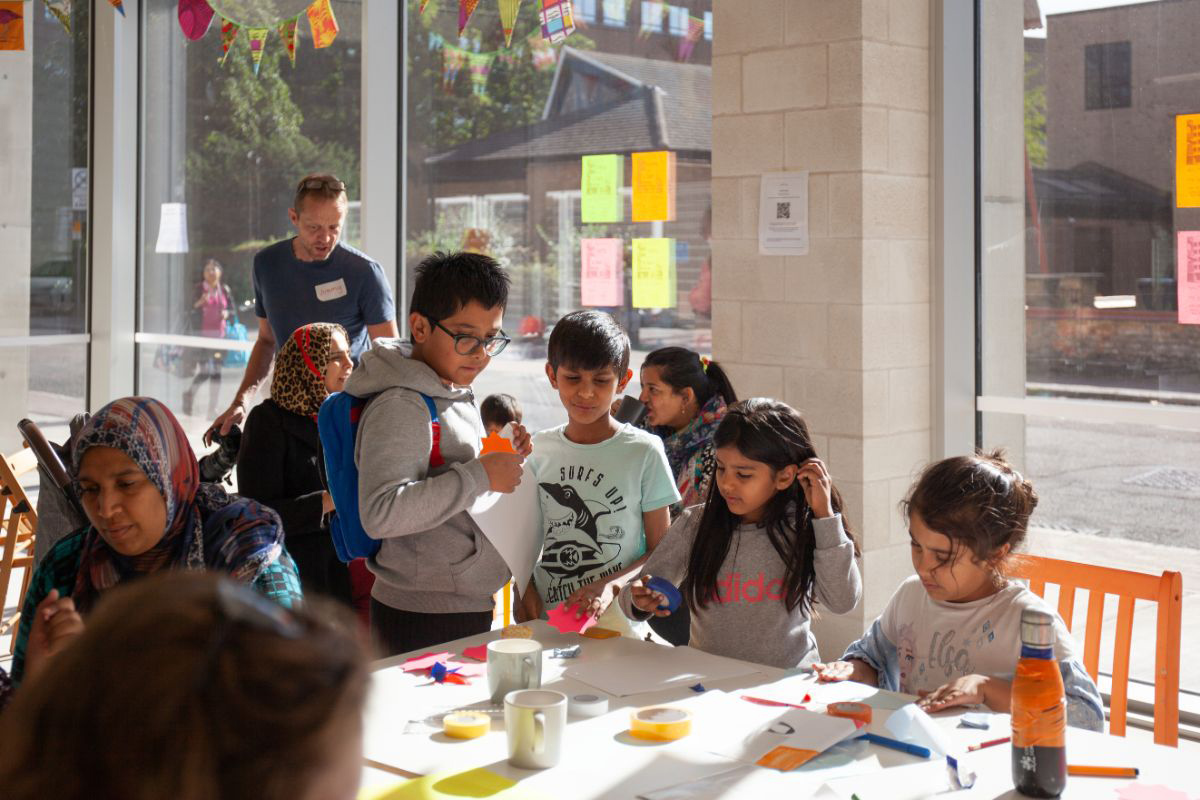
The defining insight behind Apparata’s concept is that social housing doesn’t have to be a ‘minimal viable product’. Contrary to received wisdom in the housing sector, it is possible to create generous, comfortable and inspiring places to live, rather than housing blocks that create unnecessarily mean living spaces, while ticking the regulatory boxes. Most contemporary housing units are connected via narrow, artificially lit corridors that reinforce social isolation and anonymity — A House For Artists breaks this mould.
“A home is not simply a box to live in, in reality a decent, intelligently designed home is the foundation of health, community and social wellbeing. With A House For Artists, we set out to establish a template for homes that are adaptable to different needs and changing household structures, that create opportunities for connections with neighbours while offering privacy, and that give people the space, air and natural light they need to live, work and thrive. This can be done affordably and efficiently, as with this project – there’s no excuse for bad housing,” commented Astrid Smitham, Co-founder at Apparata.
A House for Artists’ most revolutionary innovation is Apparata’s decision to make adaptable apartments and homes that can foster communities. This is facilitated by placing the circulation and fire escape routes on the building’s exterior, in the form of shared balconies on two sides of the building. There is therefore no need for internal corridors, allowing for the creation of open and flexible floor plans for each apartment, while eroding the boundaries between indoors and out, opening the building up to its surroundings and encouraging moments of connection with neighbours. The apartments fulfil national minimum space standards exactly but feel much larger because the space usually lost to a corridor is gained for the living room.

Reflecting the evolving needs of modern-day post-Covid households, the apartments have versatile layouts that allow for different ways of working from home, and removing or adding walls, creating an extra bedroom should a resident family need to take in an elderly parent, for example, and transforming in line with the lives of their occupants. One floor of optional cohousing supports living arrangements beyond the nuclear family such as extended families, or sharing childcare with a neighbour.
The building aims to support the forming of communities both inside the building and between residents and the local community, recognising architecture’s potential role in helping to combat loneliness. Everywhere that people might meet by chance is designed as a light and generous place to pause and chat.
“I would say that the most important thing that I’ve noticed is that we’ve all got happier,” said A House For Artists resident.
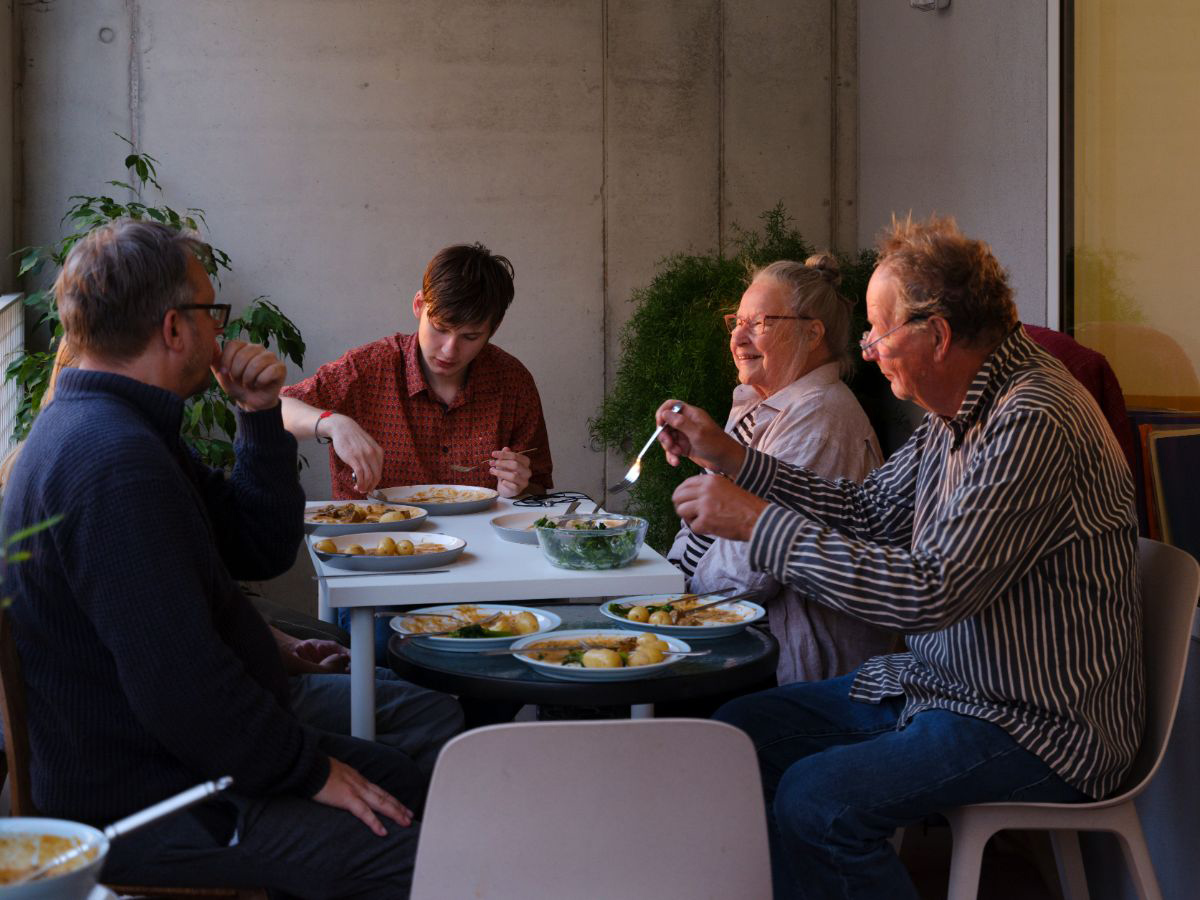
Almost two years since completion, the house’s residents and the surrounding community are extraordinarily positive in their feedback, crediting their homes with fostering a sense of peace and contentment, and the client council, the London Borough of Barking & Dagenham, has achieved their goal of attracting and retaining creatives at the same cost as a standard housing development.
“We’ve always been committed to giving our residents innovative spaces to live and work, and I’m over the moon to see the now iconic A House for Artists recognised in this way. We have a rapidly growing community of artists and creatives in the borough who are always giving back to our community in so many amazing ways, and through A House For Artists we hope to provide them with the support they need to thrive. I’m so proud that this unique and innovative model of social housing, developed through our regeneration company Be First, is getting the recognition it deserves on the highest stage,” said Cllr Darren Rodwell, Leader of Barking and Dagenham Council.
A House for Climate Resilience
The building’s passive energy measures were another major factor in its awards success. Solar shading from the covered walkways, working in tandem with the thermal mass of the ceilings prevents overheating. During the 40° heatwave of summer 2023, the apartments, which also benefit from dual-aspect natural ventilation, stayed at a comfortable 26–28° without additional cooling. These measures help ensure climate resilience against rising UK temperatures and, together with the shared air source heat pump for hot water and the solar panels on the roof, keep the building’s energy load low.
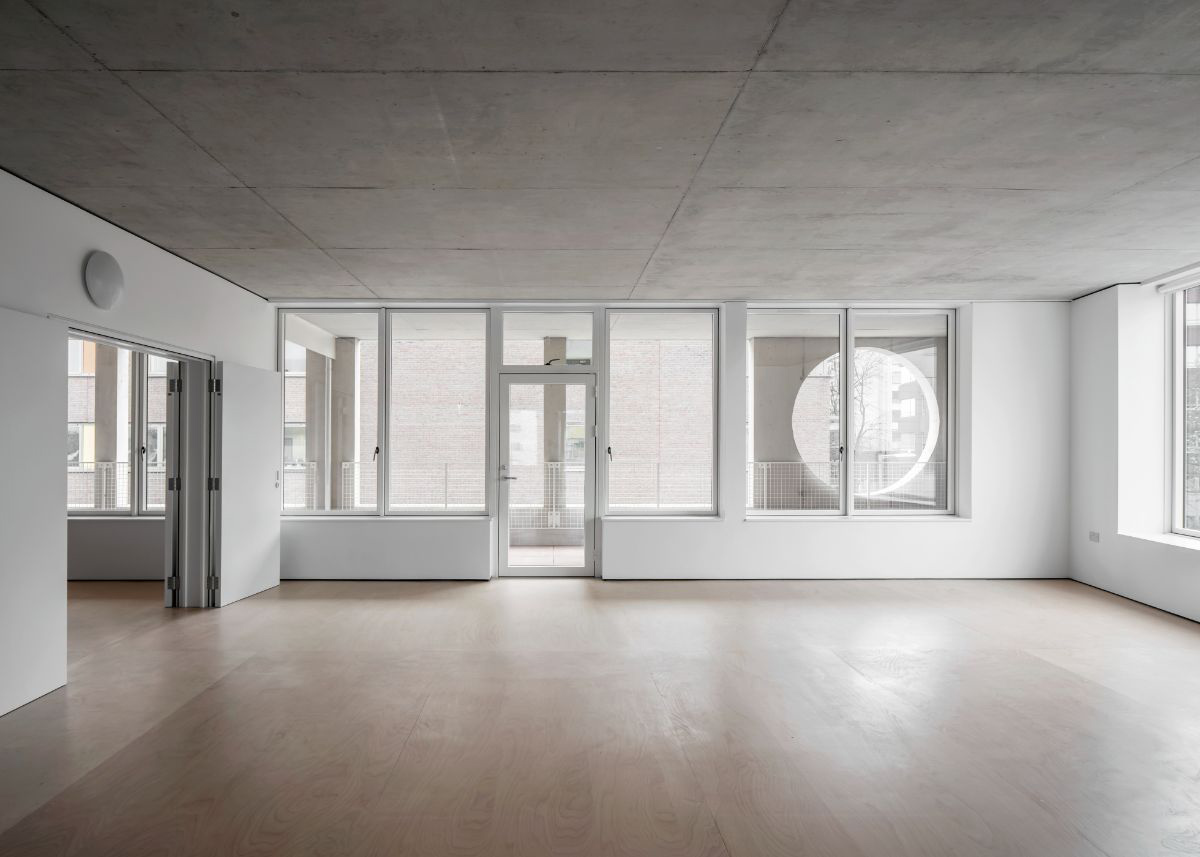
A concrete skin acts both as structure and façade, thereby allowing the building to be lean in its materials. Half the cement in the concrete is replaced by a steel-industry byproduct, and together these measures have ensured that A House For Artists has over 20% less embodied carbon than the RIBA 2030 climate-challenge target (482 kgCO2e/m2 vs 625 kgCO2e/m2). Should A House For Artists concept be taken further, future iterations can also be constructed using other, even more sustainable materials (Apparata’s original project designs were for a timber structure).
“This is an ideal blueprint for 21st Ccentury council housing, adaptable for the long term and future-proofed for any scenario,” said Oliver Wainwright.
A House for the Future
A House For Artist’s RIBA recognition and Neave Brown Award could mark a turning point in the way we as a society think about and construct housing. Apparata’s practice is driven by the belief that decent, comfortable, sustainable housing is the first step towards a robust, functional and prosperous society.
At a time when the UK appears poised to address its serious and long-standing housing shortages, we have an incredible opportunity, not merely to put roofs over people’s heads, but to create considered, sustainable, efficient homes that can improve people’s lives. Architecture has the power to impact social isolation, community fragmentation, mental health, physical health — so many of the crises afflicting society today… It’s so encouraging that this is now being recognised and understood. For us this project isn’t just about housing for artists, it is about improving housing more widely within current constraints. Everyone can make use of adaptable, neighbourly, light-filled spaces. We hope that A House For Artists is just the beginning,” added Nicholas Lobo Brennan, Co-founder at Apparata.
Architect: Apparata Architects
Client: London Borough of Barking & Dagenham; co-commissioned by Create London; delivered by Be First
Fire: Menzies Consultants
Contractor: J Murphy & Sons
Engineering: Expedition Engineering
M&E consultant: Max Fordham
QS: Artelia
Header image by Image by Ståle Erikson




